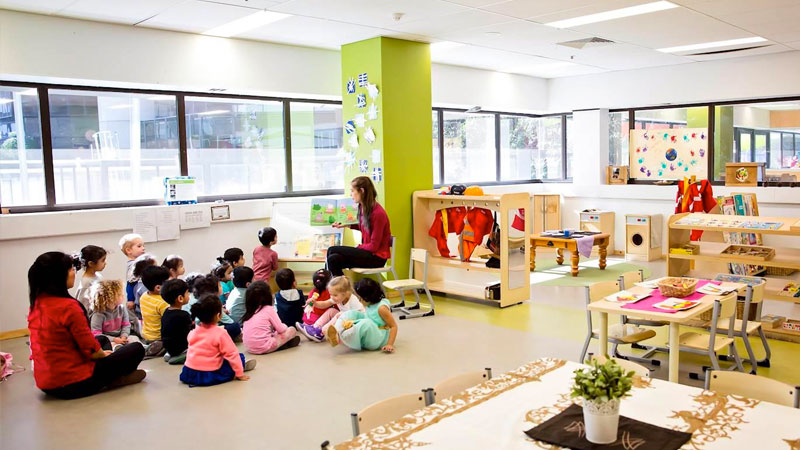Early learning real estate has remained resilient through Covid-19, affirming its long-term stability with long leases and strong returns.
The $11.2 billion sector, which significantly supports workforce participation, has long enjoyed bipartisan support, receiving some of the earliest specialist stimulus packages provided to any sector by government.
In April, the sector was thrust into the national spotlight after $1.6 billion funding boost was handed down by the federal government in order to in support parents working through challenging conditions brought about by the pandemic.
Appetite for the asset class has also reemerged due to improved fundamentals and an easing of oversupply issues following an influx of private investors over recent years seeking steadfast investment opportunities.
Investors have also be drawn to the increased quality of new centres and the services with which they provide, which have in turn attracted longer term leases and healthier returns.
Burgess Rawson director, and childcare centre specialist, Adam Thomas said the government’s commitment to the sector earlier in the year had underscored the essential nature of the asset class and its importance to the economy.
“The government sent a clear message to the business community at the beginning of the pandemic that ‘big business’ would not receive a financial lifeline,” Thomas said.
Thomas will be joining The Urban Developer alternative real estate vSummit on Thursday, 12 November on a panel dedicated to childcare real estate.

“Despite the early learning sector having several $50 million plus operators, support was immediately provided with around one million families receiving the assistance.”
Leading into the coronavirus pandemic, there was still some residual damage lingering in the sector following the collapse of Eddy Groves’ ABC Learning a decade ago.
The collapse left many investors nervous about the notion of childcare centre investment relative to their stage of life and tolerance to risk.
However demand has picked up over recent years, with approximately 1.3 million children across Australia accessing some form of funded early learning education leading into 2020.
According to recent figures from Burgess Rawson, Perth and Canberra experienced the highest growth over the past twelve months, with upwards of 2,600 locations leased to new early learning centres across both cities, accounting for 75 per cent of deals.
“Investors are looking to de-risk and seek clean, passive investments,” Thomas said.
“Childcare as an asset class continues to offer attributes that investors are favouring such as long net leases, quality tenants underpinned by land value and intrinsic business value.”
During the pandemic, occupancy rates fell sharply across many portfolios, with the industry challenges concerning revenue decline widely publicised.
Despite this, childcare providers received 50 per cent of fees based on a February reference period, plus Job Keeper, enabling many providers to record a net profit increase.

“[Over the next 12 to 24 months] centre occupancy rates may contract, driving innovation by operators,” Thomas said.
“We predict a greater level of investment by operators in existing centres to better compete.
“This will also lead to a stabilising of rent per place which historically has increased exponentially.”
Average rents have increased by 30 per cent across Australia from $2,000 in 2015 to $2,864 in 2020.
Yields have compressed across both regional and metro areas. Metro yields in key capital cities of Sydney and Melbourne have compressed by 53.4 per cent to an average of 5.39 per cent.
“The national framework has increased barriers to entry and this in turn will mute some oversupply concerns and increase the quality of the operator,” Thomas said.
“The low cost of money and volatility in alternative investment classes will continue to drive commercial property investment and underpin yields.
“However, it is expected that yields will stabilise with the rents which will bring certainty to the market for investors.”
Thomas said post-Covid forecasting has continued to predict an overall industry growth over the next five years of 2.2 per cent to $12.4 billion.
Thomas will be joined by fellow panelists Arena chief executive Rob De Vos, Charter Hall fund manager Travis Butcher and Guardian Childcare and Education chief executive Warren Bright on Thursday 12 November.
This article is republished from theurbandeveloper.com under a Creative Commons license. Read the original article.
from Queensland Property Investor https://ift.tt/3mBjnOB
via IFTTT